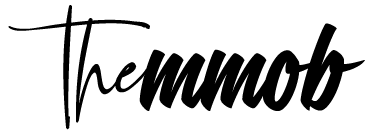Let’s face it: We’re obsessed with taking good photos of our pets. People also can’t get enough of adorable pet photos on Facebook and Instagram. Pets have become a staple member of many households, so it’s not surprising why taking photos of pets is popular among avid pet owners.
Pets make a great addition to family photos or your social media feed. Photographing pets is all about capturing their cute and funny habits, personality, and other sweet moments. The problem is, pets have little to no patience, particularly dogs and cats. Most of them are too energetic, squirmy, and over-eager that every photo session with them ends up with completely blurred or chaotic images. Their impatient behaviors prevent them from sitting still and getting a decent photograph.
That’s why pet photography has become a skill in itself. It’s a mix of child, sports, and portrait photography rolled into one. In fact, there are plenty of photography services catered to children and pets that are both simply difficult to handle. One example is newborn photo retouching services that offer retouching services for babies, toddlers, and children. They help transform adorable photos of your child into coo-worthy snapshots.
Our pets are fast and unpredictable to the point that they will test your skills and patience as a photographer. To help you capture better shots of your four-legged family member, here are ways to capture the best pet portraits.
Have a lot of patience
Just like photographing newborns and toddlers, patience is the key when capturing great photos of your pet. Wait until your cranky subject is in a calmer mood to avoid ending up with blurry images.
When photographing a pet, it’s best to prepare the camera ahead of time then wait for the perfect opportunity. Never force an animal to stay still if they just woke up or are busy with playtime. No matter how hard you discipline them, remember that animals don’t understand human language. Pets can’t follow instructions unless trained.
It’s also worth noting that pets connect with human energy, so if they sense you’re frustrated or stressed out with them, the pet will mirror those feelings. Also, raising your voice and commanding them against their will freak out and confuse the pet. If they do follow your command, your pet will certainly look off on camera with their concerned eyes and droopy ears.
The best you can do is to adjust to the pet’s own terms. In this case, wait for the moment when they’re more behave and relaxed. A great tip is to show how relaxed you are to get a higher chance of capturing a decent shot. This will open more opportunities for cute poses and intimate close-ups! Remember, your goal is to give yourself and your pet a great time together.

Never turn on the flash
There’s a good reason why professional photographers rarely activate the flash when photographing pets. The bright light coming from the flash can make an animal unease, nervous, and scared.
Camera flashes are harsh. If you’re photographing your pet indoors, open the windows instead to get more natural light. Besides the annoying red-eye effect, flash can make light-colored furs look more washed out. Also, avoid using flash when photographing pets in metal cages and glass tanks. Glass and metal reflect flash, which gives off the white hotspot effect.
When using a professional camera, the recommended setting when capturing a pet in motion is to use the fast shutter speed. You can also open the aperture to avoid blurred backgrounds.
Keep them distracted
The most difficult part of pet photography is to make a pet do a certain pose. Giving them their favorite treats or toy will help you capture their attention. Food bribes work well if you want them to face a certain direction.
Besides sitting poses, experiment with other poses to highlight your pet’s unique character. Go to a scenic location and photograph them while in action. Capture your pet’s wildest side by photographing them jumping, running, or chasing a toy or treat. You can also invite a family member to join in. Just be sure to set the shutter speed at 1/500 to prevent motion blur.
Photographing them while in play is the best solution if you can’t make a pet sit still.
Pets are among the funniest and most adorable photography subjects, but it will take a lot of patience and skills to take better photos of them. Follow our suggestions above to help you curate the best pet photo album that captures all of their cute and funny moments.

